Spices entice, heal and inspire. Background to the documentary
The film takes place in the magical spice forests of Zanzibar and on the mainland of Tanzania, in the wild cloud rainforests of Usambara. Here the exotic spices ripen on trees, bushes and climbing plants. But which spice grows where and how? Find out more about this.
Lucrative monopolies – the history of exotic spices
The warmer the country, the hotter the spices. The Indians were already practicing in 1700 BC. In the 1st century BC, people traded heavily and used the natural antimicrobial effects of spices to make their food last longer. Thanks to Alexander the Great, who reached India on his campaigns, pepper and cinnamon soon became known and popular in Europe. But they were luxury goods that only the rich and noble could afford. In the 8th century, a pound of saffron was paid for a horse. A pound of nutmeg was worth seven fat oxen and peppercorns were even worth their weight in gold. From the 10th century onwards, the spice trade was in Arab hands. The goods were transported exclusively overland and passed from middleman to middleman until they were finally sold in Europe for a hundred times the original price. The discovery of the sea route to India in 1498 marked the heyday of the spice trade. The fight for the lucrative monopolies led to bloody conflicts between the European expansion powers. Portugal became a world power because it took control of most of the spice regions. 100 years later, the Dutch won a monopoly over the territories, especially the Moluccas. They imposed the death penalty on the illegal export of spice plants. They even destroyed their own goods in order to reduce supply and make greater profits. Nevertheless, in 1770, a French official adventurously managed to smuggle out seedlings and cultivate them in the French colonies. The Dutch monopoly collapsed. From then on, England benefited from the still high demand for spices. During the 19th century, exotic spices began to be grown in plantations around the world. Prices collapsed and spices became an affordable commodity for everyone. In Europe people increasingly turned to native, sweeter plants. The exotics fell into disrepute and were sometimes dismissed as barbaric and uncultured.
The spice trade today
Until 1960, spices were primarily used for household purposes. With the emergence of large fast food and grocery chains such as McDonald's, consumption increased exponentially. Suddenly enormous quantities had to be available. The largest spice producer in the world, the American McCormick, previously purchased its products via intermediaries on the European markets in London or Hamburg. Now he ushered in a new era, from now on he sources directly from the growing areas and dictates the conditions on site. The German spice producer Fuchs is following suit. He started out as a one-man business in the post-war period and grew into a quasi-monopolist and the largest spice supplier in Europe. He prefers to buy up competitors and integrate the new brands into his range.
Today, spices are usually traded on the world market below production costs. Prices fluctuate and depend on political, economic and environmental factors. A few wholesalers and middlemen are making a killing while spice farmers are fighting for their existence. Some of the products are in transit for years and can be irradiated, stretched and flavor enhancers added. They come from cross-border cultivation areas and are subsequently mixed together. This allows poor harvests to be bridged and different qualities to be concealed. The customer receives a spice with always the same taste, without nuances or sophistication.
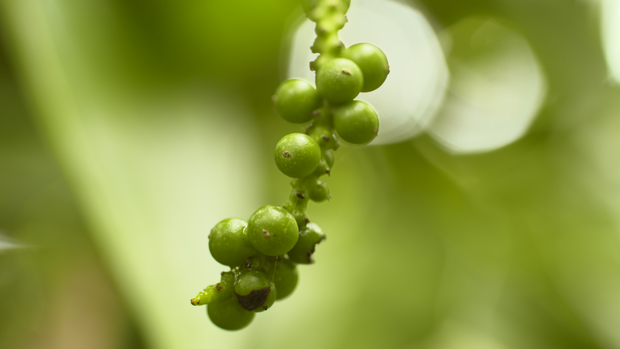
Pepper
A legend says that pepper grows on trees guarded by bats. Only by burning would the monsters be driven away and the grains, black and spicy, would be released for consumption.
The original homeland of pepper is on the Malabar Coast of India. Its outstanding importance can be seen in phrases that are still used today, such as: “Those are steep prices” or rich traders who are referred to as “pepper sacks”.
In the Middle Ages, peppercorns were also accepted as payment for rent and taxes. It was so valuable primarily because it could be used to preserve food. Peperin is responsible for this, which has an antibacterial effect.
Zanzibari pepper is 1001 Organic's flagship product. In mixed forests it grows wildly on clove and cinnamon trees, without artificial wooden aids. Due to the microclimatic conditions on the island, it develops a very special, fruity, fiery aroma. Raphael therefore entered him into a food competition, where he won gold in 2019. Since then, the pepper has gone through the roof and retailers and celebrity chefs around the world have become aware of it.
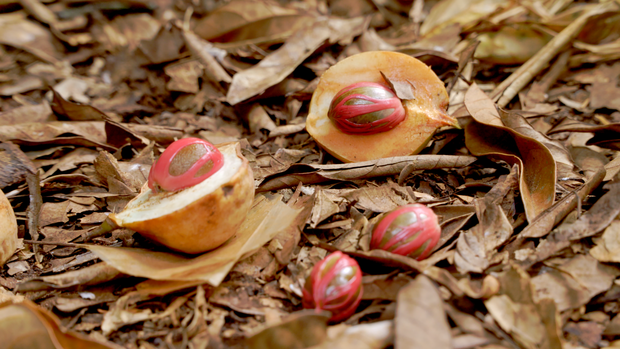
nutmeg
Most myths surround nutmeg. For example, if you don't want to have children, it can help to wear a nutmeg around your neck. Or, if you were given a nut as a New Year's gift and carried it with you constantly for a year, you would never have an accident.
In Zanzibar, young brides still add nutmeg to their food to allay their fears of their wedding night. In Oman and Saudi Arabia, however, their use is banned because of their hallucinogenic effects. From 10 grams onwards it can have an intoxicating effect due to its psychoactive components. For example, Malcolm X described the use of nutmeg as a drug in prison in his autobiography.
The orange seed coat of nutmeg, the mace, is also used as a spice. It has a finer taste and thanks to its high fat content, nutmeg butter can be obtained by pressing it. In Bavaria, white sausages are seasoned with mace and it has recently been used for African gin production.
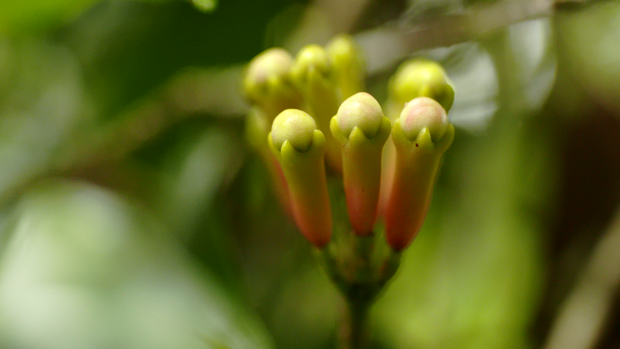
Clove
It is said that in ancient China you could only approach the emperor with a clove in your mouth to cover up possible bad breath. For a long time we used them as a home remedy for toothache: if you bite on a clove, it numbs the pain. Today the spice is used in alternative medicine for asthma and rheumatism because of its disinfectant and anti-inflammatory properties. The effects are based on the essential oils, which make up up to 15% of cloves - the higher the proportion, the better the quality. The main part of it is eugenol, which has a local anesthetic effect.
Originally only native to the Moluccas, they were brought to Zanzibar by the Omani Sultan. The carnation business flourished and from then on became a guarantee of the wealth of those who controlled it. Even today, carnations are the flagship of Zanzibar. Since nationalization, every single carnation essentially belongs to the president. Of course, this also has consequences for 1001 Organic. In effect, the contract farmers have to sell their entire carnation harvests to the state and Raphael then buys them back.
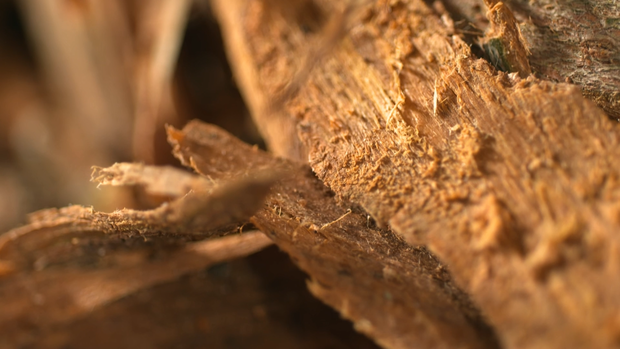
Cinnamon
In order to disguise the origin of the valuable cinnamon, the ancient Arabs spread a fantastic rumor: fearsome birds were said to have built nests made of cinnamon branches on the inaccessible cliffs of a wild island. In order to still get to the cinnamon, people laid out heavy bait, which the birds brought to their nests. But these couldn't withstand the weight, broke apart and the cinnamon fell down with a roar.
The use of cinnamon has a long tradition. The ancient Egyptians used it to embalm their dead, while in Europe it was used against gout from the 15th century onwards. Today, cinnamon is considered a superfood because, like insulin, it regulates blood sugar. But it also repeatedly gets into negative headlines because it contains coumarin. Consumed in large quantities, this can lead to liver problems.
A general distinction is made between the mild Ceylon and the spicier Cassia cinnamon. In Zanzibar, only Ceylon cinnamon is grown, which is more expensive and contains less coumarin. There are 17 different qualities of cinnamon, from low-quality chopped cinnamon to perfectly rolled cinnamon sticks.
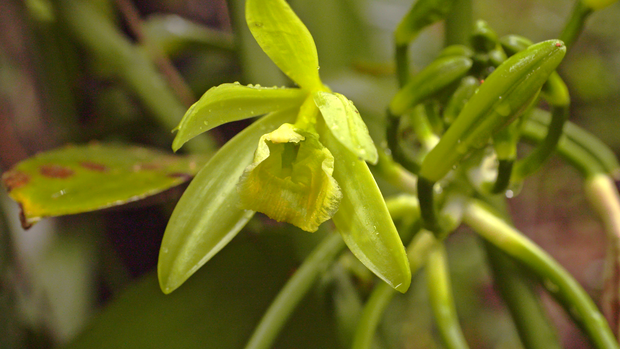
Vanilla
The Aztecs already knew vanilla and their emperor Moctezuma II is said to have drunk around fifty cups of vanilla-flavored cocoa every day. He kept the ingredients top secret.
Until 1810, vanilla thrived exclusively in Mexico. The French's attempt to plant vanilla in their colonies in Reunion Island (then Île Bourbon - hence the name Bourbon vanilla) proved impossible due to the absence of the hummingbird, their natural pollinator. It was only thirty years later that a young slave succeeded in developing an artificial pollination process that is still used today.
Global demand for vanilla is currently increasing, but crop failures are increasing due to more hurricanes. This is reflected in the price. After saffron, vanilla is the most expensive spice in the world, also because the production process is very complex.
Over 93% of the vanilla flavor used worldwide is produced artificially and much more cheaply.